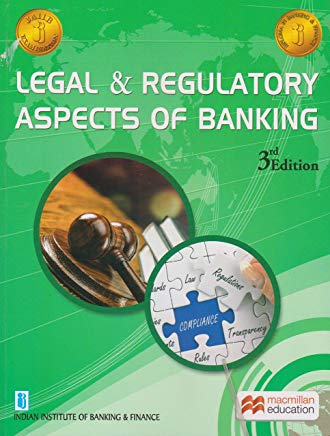JAIIB PPB Unit 27 - Different Modes of Charging Securities (Year: 2019)
1. Assignment is transfer of a right, property or a debt. The transferor is called assignor and the transferee is called assignee.
2. A borrower may assign the book debt, money due from government department and LIC as security for an advance.
3. Under the provision of the Insurance Act, an LIC is assignable by an endorsement on the back of the policy or by a separate deed of assignment, but notice of such assignment must be given to the insurer by the assignee or assignor.
4. Under section 171 of the Indian Contract Act, lien is the right of the banker to retain (and sell if need arises) possession of goods and securities owned by the debtor until the debt due from the latter is paid.
5. Lien is an implied (understood) pledge.
6. Set-off means adjusting the debit balance in one account of the debtor with the credit balance in another account of the same debtor. It is also applicable in case of partnership accounts.
7. Lien and set-off both cannot be exercised at a time.
8. Hypothecation is a charge created on movable property without delivery of possession of the property.
9. Hypothecation differs from pledge because goods remain in the possession of the borrower in hypothecation.
10. Hypothecation transforms into pledge when the possession of the goods is transferred to the creditor.
11. Hypothecation differs from mortgage because mortgage relates to immovable property but hypothecation relates to movables. Also, in hypothecation, there is only obligation to repay money and no transfer of interest but in mortgage, there is transfer of interest in the property to the creditor.
12. Pledge means bailment of goods for purpose of providing security for payment of debt or performance of a promise (as per section 172 of the Contract Act 1872).
13. In pledge, there is actual or constructive (no physical) delivery of goods to the Pawnee (who takes the goods as security).
14. 6 types of mortgage are :
- Simple mortgage – mortgage is by deposit of title deeds, mortgagee has a right to proceed against the property mortgaged and also personally against the mortgagor
- Mortgage by conditional sale – possession of mortgaged properties is given
- Usufructuary mortgage - possession of mortgaged properties is given
- English mortgage - possession of mortgaged properties is not given
- Mortgage by deposit of title deeds – it is not required to be created by way of a deed and desn’t require registration
- Anomalous mortgage
15. Mortgage is to be created by way of deed and requires to be registered under the Registration Act.
16. Limitation period for filing a suit for sale of mortgage property is 12 years from the date mortgage debt becomes due.
17. Limitation period for filing a suit for foreclosure of mortgage property is 30 years from the date mortgage debt becomes due.
18. Bankers generally prefer simple mortgage and mortgage by deposit of title deeds.
Liner Definition:
19. Pledge: When lender possess movable security.
20. Hypothecation: When lender has a charge against movable security, which is not in lender's possession.
21. Mortgage: when lender has a charge against immovable property, not in its possession.
22. Lien: not necessarily the security is in your possession, but we have frozen it for any debit/withdrawal transaction.
JAIIB Study Material
| JAIIB Paper 1 Study Material |
| JAIIB Paper 2 Study Material |
| JAIIB Paper 3 Study Material |


